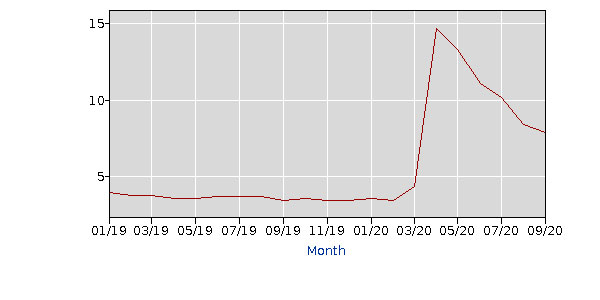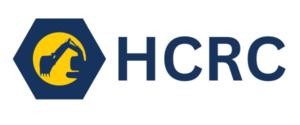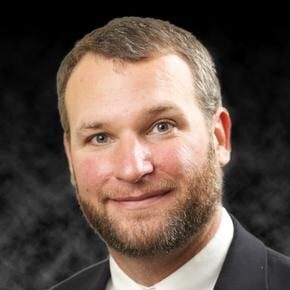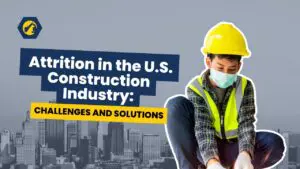The recent novel coronavirus pandemic has taken a toll on many industries, in particular those that could not realistically accommodate telecommuting, such as construction. According to data from the U.S. Bureau of Labor Statistics and analyzed by USAFacts, between the start of the year and April the unemployment rate tripled (up to 16.6%), with almost one million more construction workers jobless. This came in about two percentage points higher than the national unemployment rate of 14.7%, a figure not seen since the tail end of the Great Depression (specifically 1939).
While things have improved somewhat since then, total construction starts for the first nine months of 2020 (through September) are down 14%. According to Construction Analytics, we’re not likely to see construction volume return to early 2020 levels in the next three years. They predict that this time next year, volume will be 5% lower than today, and 14% below the February 2020 level. As such, the construction industry will have a hard time justifying growth in jobs.
Unemployment Rate as % of Population (US)

But what about those job vacancies you do need to fill?
As the COVID-19 invoked recession continues to affect unemployment in the construction industry, are you going to find yourself choosing from a pool of highly qualified and desirable candidates? The short answer is: yes and no. Let me explain.
Throughout the last recession, I frequently encountered the term “trimming the fat,” referring to those employees who were let go. The implication was that with fewer construction starts and lower overhead costs, companies could afford to operate with a leaner team.
In general when this happens, the first round of layoffs consists of those with a history of under-performance. These now unemployed workers, we’ll call them “C” and “D” candidates, make up the majority of the hiring pool, while the “A” and “B” candidates remain employed. Obviously, the longer a recession lasts and/or the more detrimental it is to a company’s survival, the more layoffs that company will likely have to make. As a result, once the under-performers are gone, it becomes increasingly necessary to let go of productive employees as well. Thus, there may be some “A” and “B” candidates swimming amongst the “C” and “D” candidates when you wade into the job pool with a vacancy announcement.
So yes, you may find there is some good talent waiting to be picked up when unemployment rates are high, as they are now. The no comes into play when you consider this talent is vastly outnumbered in the slew of applications you are likely to receive to an advertised position – most of which will come from “C” and “D” candidates. The heart of the matter is this. Your best strategy remains the same today as it was before and will be after the recession: continue to focus your recruiting efforts on those individuals who are currently employed but may be open to other professional opportunities. These are “Passive Candidates”. This tactic should automatically increase your chances of getting the best talent in the market. Hiring “C” and “D” candidates represents a greater investment with a lower rate of return. At the end of the day, can you really afford to risk hiring an unemployed “C” or “D” candidate when hiring an A or B candidate will give you a higher return on your investment?
Sources:
https://data.bls.gov/pdq/SurveyOutputServlet
https://usafacts.org/articles/unemployment-rate-jobs-august-2020/






